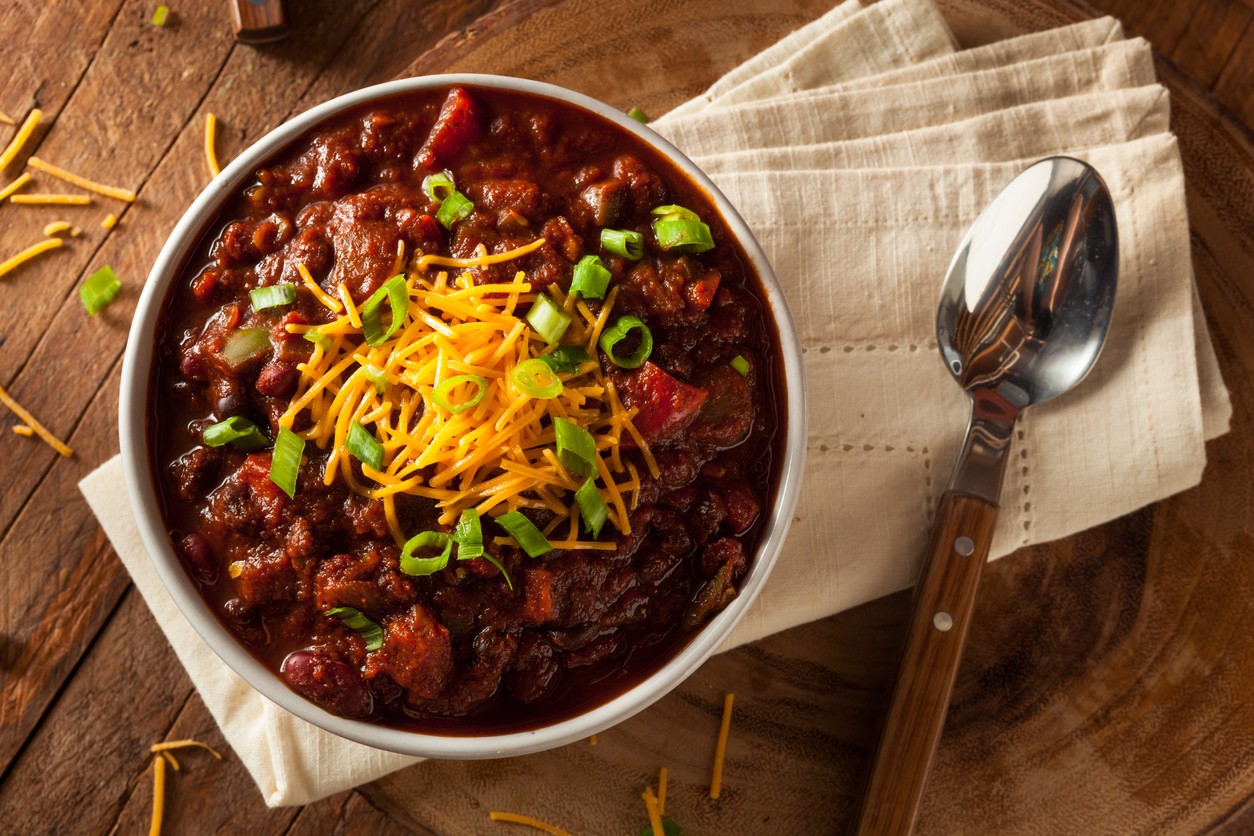How Long Does the Burn from a Ghost Pepper Last?
Posted by Ghost Scream Hot Sauce on May 23rd 2022
We all know that chili peppers burn, but why?
People the world over have a love affair with peppers. These humble yet fiery pieces of fruit (yup, they’re fruit!) are believed to be the first crop every produced domestically, with researchers finding chili pepper seeds in Mexico and Peru that date back over half a millennium.
Ghost peppers are a much more recent discovery, though this native Indian crop is at least a couple centuries old. Still, ghost peppers have made their presence known in more ways than one, so it’s past time to understand why these perky red peppers are so popular, why they're so spicy, and why people keep coming back for more.
What makes foods spicy?
 Chili peppers contain a chemical called capsaicin (cap-SAY-a-sin) that triggers your body’s pain response system. Think of capsaicin as an activator; it pokes at our transient receptor potential vanilloid 1, better known as TRPV1 and often referred to as a capsaicin receptor. This tiny protein is supposed to sense heat and respond by signaling to the brain that potential danger is looming just up ahead. The brain gets the message, then creates a pain signal to warn its pepper-eating host that if they keep downing those level 10 chicken wings, something bad might happen.
Chili peppers contain a chemical called capsaicin (cap-SAY-a-sin) that triggers your body’s pain response system. Think of capsaicin as an activator; it pokes at our transient receptor potential vanilloid 1, better known as TRPV1 and often referred to as a capsaicin receptor. This tiny protein is supposed to sense heat and respond by signaling to the brain that potential danger is looming just up ahead. The brain gets the message, then creates a pain signal to warn its pepper-eating host that if they keep downing those level 10 chicken wings, something bad might happen.
Capsaicin is so fascinating and dynamic that it’s now harvested by scientists and manufacturers interested in harness the power of the pepper to create everything from weight loss supplements to pain relieving creams. Capsaicin is even the main ingredient in pepper spray, proving that produce can offer protection as well as body-nourishing nutrients.
Why does spicy food burn?

Yes, ghost peppers are hot, but for millions of people the spicy promise of a good hot sauce is anything but a deterrent. The capsaicin we talked about earlier trips the body into thinking it’s in danger. Your body in turn releases a flood of pleasure-inducing hormones called endorphins — in other words, the right amount of chili pepper can give you a totally natural and pretty awesome “high.”
It all goes back to the relationship between your capsaicin receptor/TRPV1 and your nervous system. Humans have thrived as a species largely because we have the ability to feel and understand pain and react accordingly. If our receptors go off because we got too close to an open fire, we know to step back from the fire. If the receptors sound the alarm because we just bit into a ghost pepper, we’ll feel a similar response — our body thinks it’s being burned.
How long does the burn from a ghost pepper last?
Ghost peppers, also known as bhut jolokia, are one of the hottest peppers in existence.
Feeling the burn: Which peppers are the hottest?

When it comes to peppers, spice is relative. Or is it? Actually, there’s a very scientific way to rate which peppers are the hottest. It’s called the Scoville scale. This scale rates peppers according to how many Scoville heat units (SHU) each type of pepper typically contains. The higher the SHU count, the spicier the pepper is.
For reference, the hottest peppers in the world rate between 1.5 million and 3 million Scoville heat units. Relatively benign bell peppers and banana peppers rank lowest, at just 0 to 100 SHUs.
Here are some other commonly used peppers, their Scoville ratings, and what you can expect if you eat them straight:
- Carolina Reaper, Dragon’s Breath, Pepper X (1,500,000 – 3,000,000 SHU): Carolina Reapers and Dragon’s Breath peppers share the same Scoville rating as law enforcement-grade pepper spray, so consider your mouth under attack from the flavor authorities if you dare to chomp down on one of these chilies. Give Green Reaper Hot Sauce a try to experience this deliciously vibrant heat firsthand.
- Ghost Pepper, Naga Viper, Infinity, Trinidad Moruga Scorpion (750,000 – 1,500,000 SHU): You can tell you mouth it hasn’t been pepper sprayed, but it might not believe you.
- Red Savina Habanero (350,000 – 750,000 SHU): It’s a tiny, wrinkled fruit with a shape many people compare to that of a Chinese lantern, but this habanero mutation will take your fried rice from zero to, well, at least 350,000 in the blink of an eye.
- Habanero, Scotch Bonnet, Peruvian White Habanero (100,000 – 350,000 SHU): Habanero and Scotch Bonnet peppers are two examples of the same species and they’re comparable in terms of appearance and flavor, but the first is used mostly in Latin American cuisine and the second is closely associate with island flavors, like Jamaican jerk seasoning. Irresistible zesty and, at one time, the hottest chilies on the planet.
- Thai Bird’s Eye Chili (50,000 – 100,000): Bird’s eye chilis take pad Thai and tom kha kai from a cream coconut soup to a dish with depth, heat, and remarkably complexity. But think things through before you order — there’s a big difference between level 1 curry and a level 10, and that difference is a few dozen chilies.
- Cayenne Pepper (25,000 – 50,000 SHU): Need a sprinkle of heat? Cayenne’s here for you — and your BBQ rubs, spiced nuts, and hot sauce recipes, of course.
- Serrano, Aleppo, Cheongyang (10,000 – 25,000 SHU): Hot, but not too hot. These are great peppers for people climbing the Scoville scale but not quite ready for the main event.
- Espelette, Jalapeno (2,500 – 10,000 SHU): French peppers? Oui! Espelette is popular is Basque country where it’s often pureed or pickled, while jalapenos are the kings of Mexican cuisine and the all-American jalapeno popper. Mmm…bacon.
- Anaheim, Poblano (1,000 – 2,500 SHU): Serious spice lovers may be disappointed here. These peppers are delicious, but they’re used to add a hint of heat as their sauteed or deep fried as part of a bigger dish.
- Bell Peppers, Pimento, Banana Peppers (1-100 SHU): Spicy? We think not. These peppers are as low on the Scoville scale as you can go, and that means virtually no capsaicin to tickle your taste buds.
How to manage the burn
 To help manage the rush you get from scarfing down
spicy food, use these tips to keep that tingly warmth going without sacrificing your taste buds in the process.
To help manage the rush you get from scarfing down
spicy food, use these tips to keep that tingly warmth going without sacrificing your taste buds in the process.
If your mouth feels a little too fiery:
- Turn to dairy products. Cow’s milk contains a protein called casein that’s like kryptonite for capsaicin. By drinking milk or eating yogurt, ice cream, sour cream, or cheese, you’ll essentially knock capsaicin off its receptor and interrupt the pain signaling causing your burn in the first place.
- Try eating a spoonful of sugar or honey. The sugar should help absorb the oily capsaicin for at least some relief.
- Reach for something acidic. Lemon juice, a wedge of lime, or even a slice of tomato can neutralize alkaline capsaicin.
- Stuff your mouth with bread, rice, or another neutral starch to create a physical barrier between capsaicin and your receptors.
- Wait it out. Your mouth has a natural flushing mechanism that uses saliva and digestive enzymes to get rid of debris sitting in your mouth. Eventually, your body will use spit to break down any remaining chilies and whisk them away (to your stomach, that is). Brushing your teeth can help this process along by dislodging chilis that may have gotten caught and are therefore continuously exposing your mouth to a steady source of capsaicin.
To prevent or neutralize ghost pepper “burns” on your skin:
- Soak your hand in milk or another dairy product to neutralize the burning feeling.
- Swipe the affected area with alcohol. Capsaicin is alcohol soluble, so it should dissolve as you wipe.
- Dilute the chili oil by apply another oil. Choose something neutral like olive or vegetable oil and wipe the affected area thoroughly.
- Wash your hands with soap and warm water. Avoid steaming hot water that could open up your pores and actually increase your capsaicin exposure. Also make sure you work up a good lather and get under your fingernails.
- Make a paste using water and either corn starch or baking soda. This could possibly neutralize the oil from the chilies and ease your burn.
- Use protection — meaning you should don rubber gloves if you’re handling peppers at home and use protective eye wear if you’re in the splatter zone while chopping or blending peppers
Above all, avoid touching your eyes, nose, or other sensitive body parts if you think you may still have hot sauce or chili pepper on your hands. And remember, some of these fixes are only temporary and the relief may not be immediate — it takes time for your system to calm down once pain triggers have been activated, and if you’re still exposed to some capsaicin, the burn is likely to return.
Ghost Scream’s Gourmet Hot Sauce
Ghost Scream’s Gourmet Hot Sauce is a fan favorite for many reasons, but taste and balance is two of the biggest. We’ve created our sauces with just the right amount of heat — think pleasant tingle versus raging forest fire. The goal is to give you a sauce that brings zest and spice to your food without obscuring the dish’s existing flavors.
To make that vision into a reality, we blend our peppers in small batches, combining ghost peppers with other quality ingredients such as fresh garlic, bell peppers, onions, and spices. It’s intense yet refined, powerful yet restrained enough to use on everything from scrambled eggs to chicken wings. Finally, there’s a ghost pepper hot sauce truly meant for everyday use.
To explore the full range of Ghost Scream products, check out our online store.

